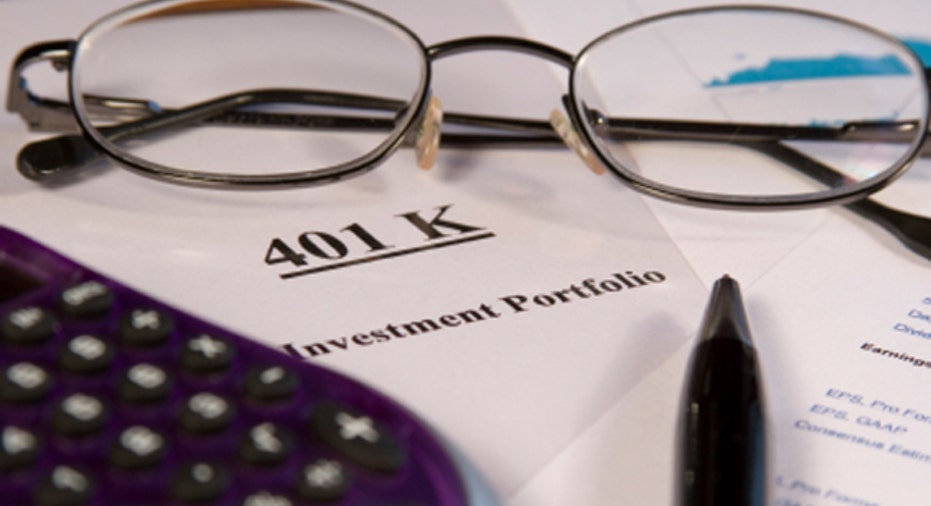Why Bother With Target-Date Funds?

If you are invested in a target-date retirement fund, wealth manager Leonard Raskin has a little message for you: It's time to reconsider.
As far as he's concerned, target-date funds are just a marketing gimmick. "You could buy the S&P 500, or even a bond fund, and do way better - and you're paying far more in fees," said Raskin, a financial planner with Raskin Global in Hunt Valley, Maryland.
Sour grapes or valid warning?
It is part of a growing debate between some financial advisers - whose job, after all, is to construct successful portfolios for their clients - and target-date funds, which are basically the 'Set-It-And-Forget-It' option of the retirement investing world.
In a bumpy era for the stock market, target-date funds have been an industry bright spot. They aim for a retirement date - say 2030 or 2040 - by slotting younger investors into riskier assets like equities, and gradually pivoting over time toward bonds and cash.
As a result, they are a more balanced and compelling option for 401(k)s than money-market funds, which earn practically nothing; pure stock funds, which expose shareholders to more risk; and balanced funds, which may maintain a stable allocation between stocks and bonds even as the shareholder ages and moves closer to retirement.
No wonder target-date funds have exploded to more than a third of a trillion dollars in assets, according to research firm Strategic Insight. They have become so popular, in fact - assisted by employers setting them up as a default 401(k) option - that they are expected to grow to half of the projected $7.7 trillion in 401(k) assets by 2020. Stunning, for a fund category that didn't even exist until the mid-2000s.
"They're an excellent investment solution for most people in most situations," said Stuart Ritter, a financial planner for Baltimore-based fund shop T. Rowe Price, which offers a full menu of target-date funds. "I liken them to being the automatic transmission of the investing world - and 95% of cars sold in North America have automatic transmission."
Not all investment professionals are thrilled about the target-date revolution. In fact, a number - like Raskin - are warning their clients away from the red-hot products.
Among common complaints:
Fees can be relatively high, with an average expense ratio of more than 1%, according to fund research firm Morningstar.
Performance can be lackluster. The average fund with a 2015 target date posted a loss in 2011, a year in which the Dow Jones industrial average as well as bonds delivered gains.
And then there's the basic premise: Slotting everyone of the same age into the same allocation defeats the purpose of financial planning, which is to design a portfolio appropriate to an investor's risk tolerance.
Such concerns do not seem to be stemming the tide of target-date funds. Fund giant Vanguard Group reports that 82% of its 401(k) plans now offer target-date options, and that's the only place 64% of new employees invest (often slotted there automatically). In those retirement accounts, target-date funds are now gobbling up more than a quarter of all contributions, and almost half of all employees have a stake in them.
"Target-date funds solve a key problem, which is that most individuals don't have the interest or expertise to be constructing their own portfolios," said Jean Young, a senior research analyst at the Vanguard Center for Retirement Research.
But there are red flags to consider. Here are the major ones - and how to deal with them:
FEES. For many investors, a balanced target-date fund replaces other broad default investments, like an index fund. But while the SPDR S&P 500 ETF has an expense ratio of 0.09%, Morningstar reports that the average target-date fund has fees of 1.08%.
"Target-date funds are an expensive tool," said financial adviser and author John Graves. "It's like taking a taxi to Vegas."
Over time, such a wide gulf in fees can consume a portion of portfolio returns. But some fund shops charge far more than others; Vanguard's expense ratios for its target-date funds range between 0.17-0.19%, far below the industry average.
PERFORMANCE. Every target-date fund is constructed differently. Even so, if you look at 2011's track record, they had a very uninspiring year. While the S&P 500 was flat, and the Barclays U.S. Bond Index rose 7.8%, the average 2015 target-date fund sank 0.3%, according to Morningstar. A couple of reasons: By design, such funds are a stew of different holdings, meaning you will not fully benefit from the rise of any one asset class; and the underlying funds may not match their benchmarks.
COMPLICATED PORTFOLIOS. One-stop shopping may be easy, but the funds have become more complex, featuring exotic instruments like commodities, real estate and even derivatives. "It gives a false sense of safety," said Robert Farrington, founder of the personal-finance site The College Investor. "You never really know the exact contents, which makes overall portfolio diversification hard."
RISKS REMAIN. Most target-date funds operate on a gradual "glidepath," continuing to hold equities well after your retirement date. If you're uncomfortable with that remaining risk, you can always select a closer target date (thereby boosting your percentage of bonds and cash).
PERSONALIZATION. Job One of any financial planner is to figure out a client's risk tolerance. Conservative investors will be slotted more into fixed income or money-market funds, while risk-lovers prefer to bet heavily on equities. Target-date funds, on the other hand, paint everyone of the same age with the same brush.
The bottom line? Target-date funds offer a reasonable entry point for most younger and novice investors who don't have the time or sophistication to diversify and reallocate on their own. Yet as you age and accumulate more assets, you may want to consider a portfolio that is more customized to your particular goals and risk tolerance.
(Editing by Lauren Young, Jilian Mincer and John Wallace)
(The writer is a Reuters contributor. The opinions expressed are his own.)